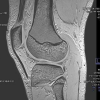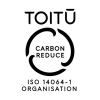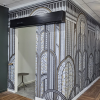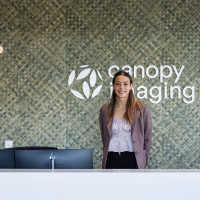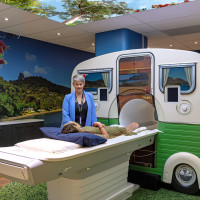
A Non-Invasive Look at Your Heart Arteries - CT Coronary Angiography
What is CT Coronary Angiography?
A computerized tomography (CT) Coronary Angiogram (CTCA) is a non-invasive imaging test that uses computed tomography scanning and a special dye (contrast) to produce detailed images of your heart and it’s blood vessels (the coronary arteries).
It can show if there are blockages or narrowing in the coronary arteries, which supply blood to your heart muscle. This helps identify coronary artery disease, which can lead to heart attacks.
Unlike traditional coronary angiograms, which involve inserting a catheter through the groin and guiding it to the heart, a CT Coronary Angiogram only requires an injection of contrast dye through an intravenous (IV) cannula. This means you won’t need to stay in the hospital after the procedure.
CT Coronary Angiography may be a better option than a traditional coronary angiogram if you have a moderate risk of coronary artery disease. A traditional coronary angiogram may be preferred if you have known coronary artery disease, as it allows doctors to treat any blockages detected during the same procedure.
CT Coronary Angiograms and traditional coronary angiograms both involve some radiation exposure. Canopy Imaging’s modern 128 slice state-of-the-art Siemens CT scanner allows scanning to be completed rapidly, with a low radiation dose.
When and why might CT Coronary Angiography be needed?
A CT Coronary Angiogram can help diagnose coronary artery disease early, allowing for timely treatment and lifestyle changes that can improve your heart health.
It may be recommended if you:
- Have symptoms of coronary artery disease, such as chest pain (angina), shortness of breath, or unexplained dizziness or fatigue
- Have had a heart attack or stroke and require further assessment
- Are scheduled for heart surgery or other cardiac procedures (to first make sure your coronary arteries are normal)
- Are at high risk of heart disease due to having diabetes, high cholesterol, or high blood pressure
- Have abnormal results on non-invasive heart tests, such as an ECG or stress test
- Have a family history of heart disease
- Have previously had coronary artery bypass surgery (to monitor the bypass grafts)
The procedure helps doctors to:
- Identify the location and severity of blockages or narrowing in the coronary arteries
- Decide whether additional diagnostic tests or treatments are needed
Monitor the effectiveness of treatment
What to expect during your procedure
You’ll report to our Canopy Imaging reception. From here, one of our friendly team members will take you into another private reception area.
Our staff will check your questionnaire and discuss any relevant medical history with you. We will measure your blood pressure and heart rate, and might also take an ECG reading. We will then talk you through the procedure and have you sign a consent form.
Our doctor may give you a medication called a beta-blocker, which slows your heart rate. Because the heart is always moving as it beats, slowing it down slightly allows the scanner to obtain clearer, detailed images. Some people, particularly those with asthma or chronic obstructive pulmonary disease (COPD), have side effects from beta-blockers, such as shortness of breath or wheezing. Please let us know if you’ve had side effects from beta-blockers in the past.
Just before you begin your scan, you'll need to remove clothing from above your waist, and any jewellery, and change into a special gown.
Our technician will place some electrodes on your chest to record your heart rate during the exam and will insert an intravenous (IV) cannula in your arm. During the scan, they will inject a special dye (contrast) through this to make your coronary arteries visible on the images taken by the CT scanner. You may experience a warm flushing sensation after the dye is injected.
When you are ready to be scanned, you will lie on a long padded table that slides through the CT scanner (a short, doughnut-shaped machine) while it takes X-ray images. The machine will make clicking and whirring sounds while it does this. Your head will remain outside the scanner.
The technician will operate the machine from a room next door and will be able to see and communicate with you throughout the procedure. They’ll ask you to lie still and to hold your breath for short periods of time.
The actual scanning part of the procedure takes less than a minute, but the entire process may take over an hour, as it takes time for the beta-blocker to slow your heart rate sufficiently.
After your procedure
You can return to your normal daily activities after your CT Coronary Angiogram is completed. You should be able to drive yourself to work or home.
The images from your CT Coronary Angiogram will be reviewed and analysed by a cardiologist. The non-heart structures in your chest will also be reviewed and reported by a radiologist. Their findings and any recommendations will be reported to your GP/specialist. It normally takes up to 7 days to complete this process.
Protecting your heart health
Regardless of the results of your test, making healthy lifestyle changes can protect your heart and improve your overall well-being. Including
- Regular physical activity
- A healthy diet
- Stop smoking
